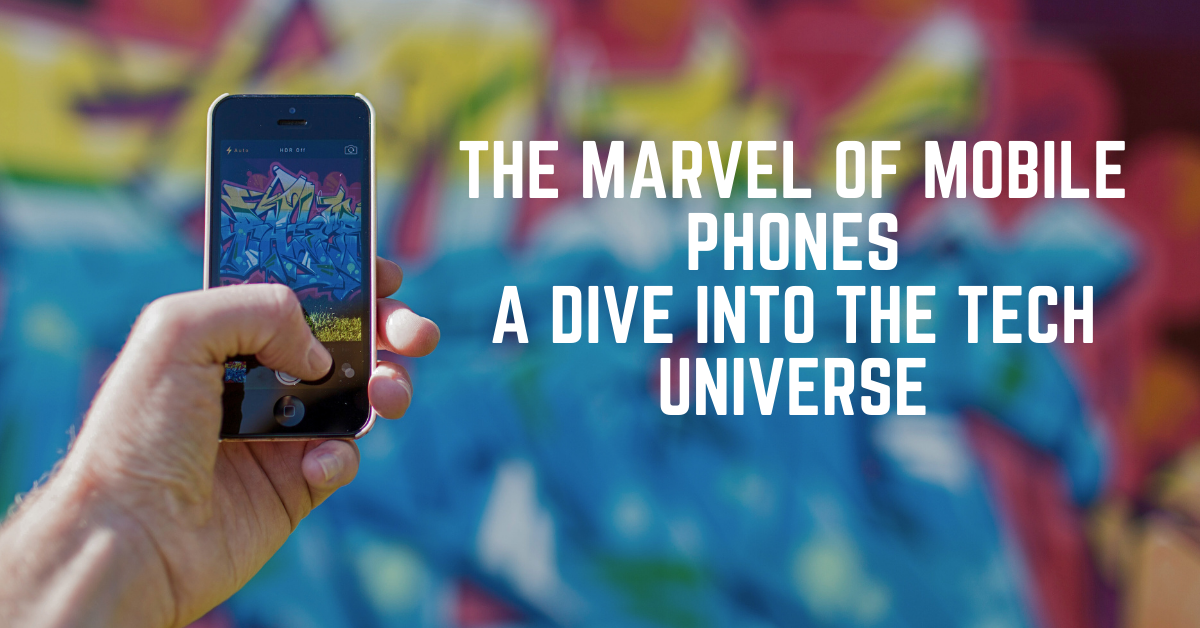Introduction
In the vast realm of technology, few inventions have left an indelible mark on our daily lives like the mobile phone. This pocket-sized marvel has transformed from a simple communication device to a multifunctional gadget that connects, entertains, and empowers. In this article, we embark on a journey through the intricacies of mobile phones, unraveling the technology that makes them an integral part of our modern existence.
Evolution of Mobile Phones
From Brick to Sleek: A Design Odyssey
The journey of mobile phones began with bulky devices that could only make calls. Over time, design evolution has led to sleek, sophisticated smartphones that not only fit in our pockets but also boast impressive displays and powerful capabilities.
The Rise of Smartphones
The advent of smartphones marked a paradigm shift. These intelligent devices not only allowed communication but also brought the digital world to our fingertips. The integration of touchscreens, powerful processors, and versatile operating systems turned phones into personal assistants, entertainment hubs, and productivity tools.
Key Components of Mobile Phones
1. Processor Powerhouse
At the heart of every mobile phone lies its processor—a tiny but mighty brain. Processors, also known as System on a Chip (SoC), handle everything from running applications to managing the device’s overall performance.
2. Display Technologies
From LCD to OLED and AMOLED, display technologies have evolved to offer vibrant colors, high resolutions, and energy-efficient viewing experiences. The introduction of edge-to-edge displays has further enhanced the visual appeal of smartphones.
3. Battery Innovations
The Achilles’ heel of early mobile phones was battery life. Today, advancements in battery technology have extended the longevity of smartphones. Fast charging and wireless charging technologies have also become standard features.
4. Camera Capabilities
Mobile phones have become our go-to cameras. The integration of high-quality lenses, image sensors, and advanced image processing algorithms has elevated smartphone photography to professional levels.
5. Connectivity Magic
The ability to connect seamlessly is a hallmark of modern mobile phones. 5G technology is pushing the boundaries, offering faster internet speeds and low-latency connections, paving the way for augmented reality (AR) and virtual reality (VR) experiences.
6. Storage Solutions
Gone are the days of limited storage. Mobile phones now offer ample internal storage, often complemented by expandable storage options. Cloud services ensure that our photos, videos, and documents are securely backed up.
Operating Systems: The Digital Soul
1. iOS
Exclusive to Apple devices, iOS is celebrated for its user-friendly interface, seamless integration with other Apple products, and a curated App Store.
2. Android
Powering the majority of smartphones, Android is an open-source operating system known for its customization options, diverse app ecosystem, and widespread adoption.
3. Others: HarmonyOS, KaiOS, and Beyond
In the ever-expanding landscape, alternative operating systems like HarmonyOS and KaiOS aim to bring innovation and competition, offering unique features and functionalities.
Mobile Apps: The Heartbeat of Smartphones
1. Social Media Apps
From Facebook to Instagram and TikTok, social media apps have become integral to how we connect, share, and express ourselves.
2. Productivity Apps
Mobile phones are no longer just for entertainment. Productivity apps like Microsoft Office, Google Workspace, and project management tools turn smartphones into powerful workstations.
3. Entertainment Galore
Streaming services, gaming apps, and virtual reality experiences bring the world of entertainment to our palms. The mobile gaming industry, in particular, has witnessed exponential growth.
The Impact of Mobile Phones on Society
1. Communication Revolution
Mobile phones have revolutionized communication, breaking down geographical barriers and fostering instant connectivity.
2. Economic Empowerment
The ubiquity of mobile phones has paved the way for financial inclusion, with mobile banking and payment apps empowering individuals, especially in regions with limited access to traditional banking.
3. Education and Information Access
Smartphones have become powerful tools for education. Educational apps, online courses, and access to a wealth of information have democratized learning.
4. Health and Wellness Tracking
Mobile phones serve as personal health assistants, tracking fitness, monitoring vital signs, and providing access to health resources.
5. Privacy and Ethical Concerns
The convenience of smartphones comes with the challenge of balancing privacy. Issues related to data security, surveillance, and ethical considerations continue to be significant concerns.
Future Trends: What Awaits Us?
1. Foldable Displays
The era of foldable smartphones is dawning, promising larger screen real estate without sacrificing portability.
2. AI Integration
Artificial Intelligence (AI) is set to play a more significant role in enhancing user experiences, from personalized recommendations to improved virtual assistants.
3. Extended Reality (XR)
The convergence of augmented reality (AR) and virtual reality (VR) is opening new frontiers, transforming how we interact with the digital and physical worlds.
4. Sustainability in Tech
As the tech industry grapples with environmental concerns, sustainable practices in mobile phone manufacturing and recycling are gaining prominence.
For More Mobiles Info: Read Now
Conclusion
In the grand tapestry of technological advancements, the mobile phone stands as a testament to human ingenuity. From humble beginnings to becoming an indispensable part of our lives, the journey of mobile phones reflects the relentless pursuit of innovation. As we look to the future, the possibilities are limitless, and the evolution continues.
FAQs
1. Are mobile phones harmful to health?
Extensive research suggests that while excessive use may have some health implications, when used moderately, mobile phones are generally considered safe.
2. What is the future of mobile phone design?
Foldable displays and innovative form factors are likely to dominate future mobile phone designs, offering new dimensions of user interaction.
3. How do mobile phones impact mental health?
While mobile phones offer connectivity and entertainment, excessive use, especially on social media, may contribute to mental health challenges. Balancing usage is key.
4. What role will AI play in future smartphones?
AI is expected to enhance user experiences, providing more personalized and efficient interactions, from predictive text to virtual assistants.
5. How do mobile phones contribute to environmental issues?
The production and disposal of mobile phones contribute to electronic waste. However, there’s a growing emphasis on sustainable practices in the tech industry.
